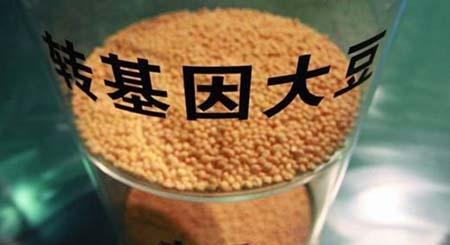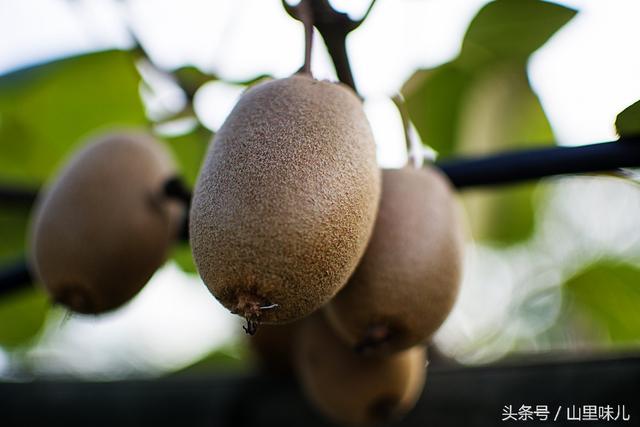Will our transgenes break from these three crops? Would you plant it?
On August 8, the 13th five-year National Science and Technology Innovation Plan (hereinafter referred to as "the Plan") was officially released. Among the 13 key scientific and technological innovation projects encouraged, genetically modified genes are prominently listed. Among them, three kinds of crops have been listed as the key targets of transgenic technology in China. What will be the position of transgene in China's agriculture in the future? Which three kinds of crops will become the key targets, the following editor will take you to understand.
The reporter conducted an in-depth investigation and found that: in fact, as early as 2011, in the National 12th five-year Plan for Scientific and technological Development, the government began to support the cultivation of new varieties of genetically modified organisms. Different from the previous plan, the "Plan" five years later has significantly increased its support for GM research: on the basis of the new GM cotton and corn previously supported, it has increased its support for soybeans, and defined the new GM types of promoting crops: insect-resistant cotton, insect-resistant corn, herbicide-resistant soybeans, etc., the content is more specific and more specific.

The following is a comparison of the original text on this content in the two "plans".
"National 12th five-year Plan for Scientific and technological Development": to meet the strategic needs of ensuring food safety and developing biological breeding industry, focusing on the production of major crops and livestock, break through key technologies such as gene cloning and functional verification, large-scale transgenic, biosafety, improve the cultivation and safety evaluation system of genetically modified organisms, and obtain a number of functional genes with important application value and independent intellectual property rights. We will cultivate a number of major new transgenic varieties with disease and insect resistance, stress resistance, high quality, high yield and high efficiency, realize the industrialization of new genetically modified cotton, high-quality corn and other new varieties, raise the level of biological breeding in China as a whole, and enhance the ability of independent innovation in agricultural science and technology. we will increase farmers' income by increasing agricultural efficiency.
The 13th five-year National Scientific and technological Innovation Plan: strengthen the research on the genes of insect resistance, disease resistance, drought resistance and cold resistance of crops, and strengthen the research and development of genetically modified cotton, corn and soybeans. We will promote the industrialization of major products such as new insect-resistant cotton, insect-resistant corn and herbicide-resistant soybeans, and strengthen the research and development of new technologies for gene cloning, transgenic operation and biosafety. The research on character improvement based on new technologies such as non-endosperm specific expression and gene editing is mainly supported in staple grain crops such as rice and wheat, making the overall level of agricultural genetically modified organisms research in China in the forefront of the world. to provide varieties and technical reserves for ensuring national food security. Establish a standardized technical system for biosafety evaluation to ensure the safety of genetically modified products.
What does the change of the two "plans" mean?
It is understood that soybeans, cotton and corn are the most genetically modified crops in the world. The United States is the country with the largest use of transgenic technology. Since the genetic modification technology was actually put into agricultural production in the early 1990s, 55% of soybeans, 45% of cotton and 40% of corn in the annual output of agricultural products in the United States have been gradually transformed into genetically modified production. As a large country with 1.3 billion people, China has a large population and little land, and the environmental and resource constraints faced by agricultural development are getting stronger and stronger, so it is understandable to study genetically modified genes as a technological reserve. If you do not want to be controlled by others for a long time in the agricultural market, it is necessary to increase the research on genetically modified biotechnology. From this point of view: there are positive factors in the introduction of the "Plan".
However, the safety of genetically modified food is still an issue of public concern. In April this year, Liao Xiyuan, director of the Science, Technology and Education Department of the Ministry of Agriculture, said at a news conference that promoting the industrialization of genetically modified crops will be eaten indirectly according to non-edible →.
A roadmap for → consumption. First of all, the development of non-edible cash crops, followed by feed crops, processing raw material crops, the third is general food crops, and finally food rations crops. The reporter saw that in the science and technology "plan" during the "12th five-year Plan", the key development of cotton is as a non-food crop, while corn is mostly used for feed and can be regarded as an indirect food crop. From this point of view, the soybeans added in the "13th five-year Plan" are edible crops, does this mean that the industrialization of genetically modified crops in China has reached the last two steps of indirect consumption of →? Will food rations be further promoted in the future? It deserves our close attention.
In addition, on the road of commercialization of genetically modified agricultural products, it is particularly important to protect consumers' right to know and choose. At the end of last month, US President Barack Obama signed a bill to force the labelling of genetically modified foods. According to the bill, food manufacturers must label the genetically modified ingredients in their products and can choose their own labeling form. Currently, there are web sites, phone numbers, QR codes, and symbols or text that meet USDA standards. Industry analysts say China should also respect and protect the rights and interests of consumers when promoting GM products.
Related
- A course of planting techniques and methods on how to grow carrots
- How to plant the latest tulips?
- Is it better to pick tea in the morning or in the afternoon? When is the best time for tea to be picked? what is the third or fifth tea?
- Launch Yuanxiao Happy combination Haocha + Tea Yuan healthy Taste
- Penghu Tourism "Fireworks 20 Parade with You"
- 2022 West Lake Happiness holds "Digital Revitalization Voucher" and draws iphone13 and laptop.
- Banqiao Fuzhou social houses are designed to change start-up combined with police elimination to create a safe and livable environment
- The convenient measure of "mechanical weeding" in Xinbei has been abused and the Agriculture Bureau has imposed heavy penalties on the illegal land consolidation.
- Changgeng University Joins Hands with Four Memory Factories to Rescue Memory Talent Shortage
- The list of Taiwan's top 100 MVP managers is listed by the Director-General of the Farmers' Association of Sanxia District.



